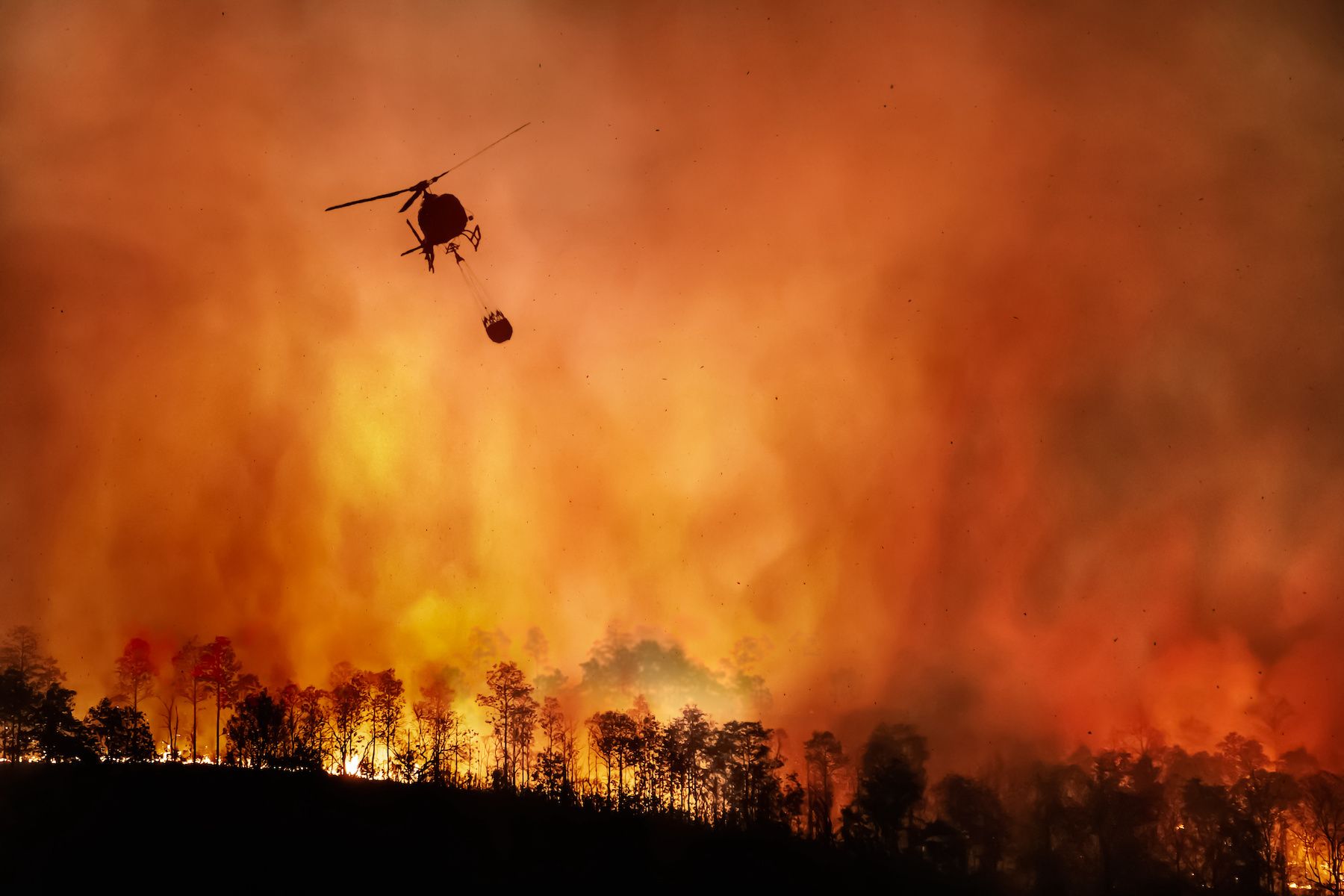In California areas affected by the 25 largest wildfires from 2011 to 2018, researchers found a significant increase in psychotropic medication prescriptions.1
Attempting to address the need for allocation of mental health resources as a response to natural disasters, authors of the study broke down the mental health measures that individuals took immediately after a wildfire occurred.
Key Takeaways
- Researchers aim to address the mental health burdens caused by wildfires in California metropolitan areas.
- In California areas that experienced significant wildfires from 2011 to 2018, psychotropic medication prescriptions increased.
- Authors of the study address the need for more research on mental health, especially in areas frequently experiencing wildfires.
“The public health burden due to wildfires can be substantial with negative health consequences resulting from direct fire-related damage, air pollution, and severe disruptions to ecosystems. While the physical health effects of wildfires have been extensively studied, their effect on mental health is poorly understood despite a vast burden expected,” they explained.
The researchers used Twitter posts from an official local, state, or federal wildfire agency to identify the start of a wildfire. They studied psychotropic prescription changes by age and sex for the 6 weeks following each wildfire’s onset date—known as the “fire period.” Data was only attributed to residential proximity of large wildfires that burned at least 25,000 acres within a California metropolitan statistical area (MSA).1
They also defined psychotropic medications as antidepressants, antipsychotics, anxiolytics, hypnotics, and mood-stabilizers, with statins—commonly used to treat high cholesterol—used as the negative control medication.1
Although an increase in psychotropic prescriptions was found, researchers note that those increases were only significant in antidepressants, anxiolytics, and mood-stabilizing medications, with no significant increases in antipsychotics, hypnotics, or statins.1
Association of Wildfires and Mental Health
MarketScan data was utilized to include 7,115,960 individuals residing in MSAs where large wildfires occurred in the study. For statistical analysis, participants were then split into male and female categories separated by age groups: 18-44 years old or 45-64 years old.1
Of over 7 million participants, the mean percent of individuals with at least 1 outpatient psychotropic prescription was 22%.1
Despite researchers finding significant increases specifically in antidepressants, anxiolytics, and mood-stabilizing medications, the most significant data point in this study is the total psychotropic prescription increase from 251,978 to 255,319 (a 1.3% increase).1
Read More: Wildfire Smoke Raises Respiratory Concerns Across Northeastern United States
Furthermore, addressing the age and sex stratifications of the study, researchers found a significant increase in prescriptions for older adults 45 to 64 and for women. And finally, although hypnotic prescriptions did not increase significantly overall, they did appear to rise for men during the fire period.1
Addressing the Need for More Efficient Mental Health Services
Although the prescription increase of 1.3% was deemed significant, researchers explained that this may even be an underestimate of the true scope of how mental health was affected by California wildfires.
“As these prescription records were sourced from commercial claims data, they likely underestimate the burden for other disproportionately affected groups, such as people who are uninsured or experiencing unstable housing, and those enrolled in Medicaid or Medicare,” wrote the authors.1 “Rural communities also face a disproportionate burden of wildfire exposure and concomitant lack of mental health resources, which may not be captured in these psychotropic medication prescriptions if conditions go undiagnosed and untreated.”
Researchers also noted that the increase in prescriptions for women could be attributed to a greater mental health burden or greater engagement in mental health care, further underscoring the perceived mental health burdens or stigmas for men.1
Inversely, the study authors were sure to mention the possible increase of mental health burdens due to coverage, social media exposure, and community stress caused by the wildfires, which could have exacerbated psychotropic prescriptions in areas where wildfires occurred.
Despite the authors noting an increasing need to address climate change’s effects on wildfires1, they concluded the study by addressing the overarching need for mental health prescription research.
“Further investigation on mental health prescription medications is needed, particularly focusing on populations with limited or no access to mental health services, so that appropriate public health measures can be implemented with an emphasis on addressing medication needs of affected populations,” concluded the authors.
READ MORE: 2024 Pharmacy Forecast: A Focus on Mental Health
References
1. Wettstein ZS, Vaidyanathan A. Psychotropic medication prescriptions and large California wildfires. JAMA Netw Open. 2024;7(2):e2356466. doi:10.1001/jamanetworkopen.2023.56466
